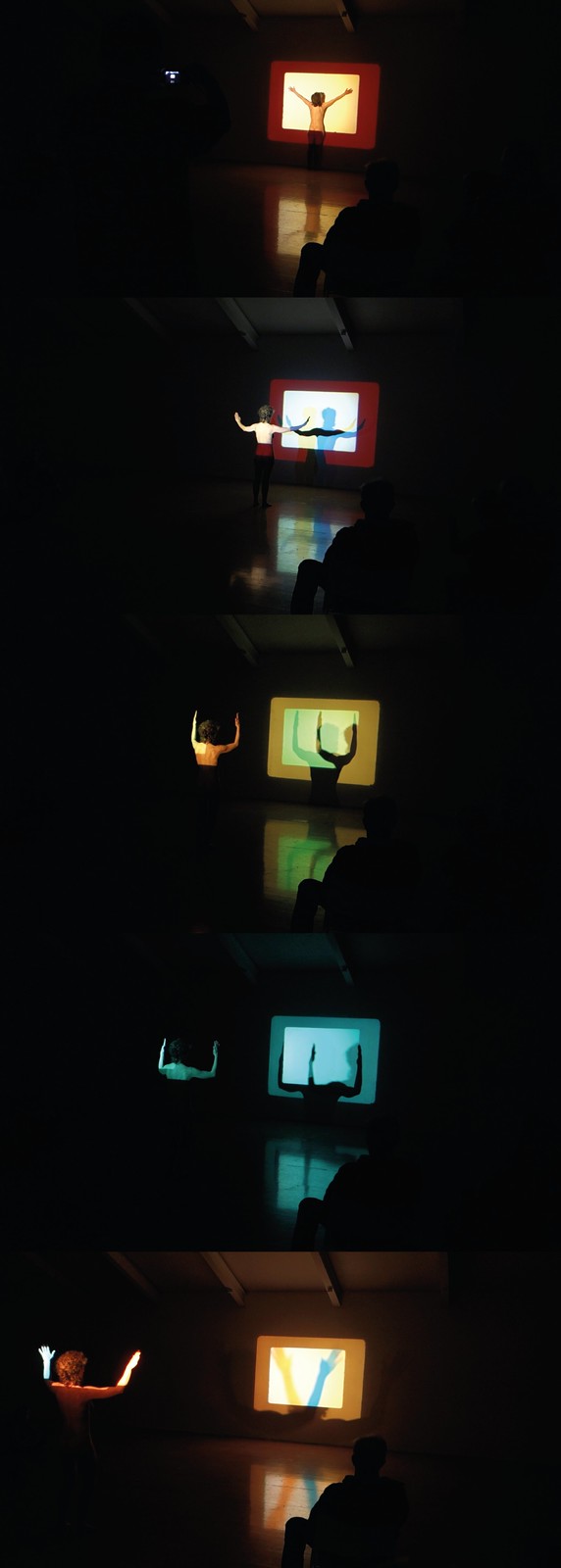
Performance Matters is a new journal published by the Simon Fraser University (Canada). The journal is especially interested in:
work that focuses on the materiality and the consequentiality of performance: the objects that comprise it, the labour that goes into it, the physical sites that give shape to it, as well as the effects it has — what, in short, performance does, and why that is meaningful.
Teaching and Learning Cinema has contributed an article to the first edition of the journal which is themed “Archiving Performance”, and edited by Peter Dickinson.
Our contribution is entitled “Reaching Through to the Object: Reenacting Malcolm Le Grice’s Horror Film 1“. The article begins like this:
In July 2014 Teaching and Learning Cinema, an Australian artist group coordinated by Louise Curham and Lucas Ihlein, presented a reenactment of Malcolm Le Grice’s Horror Film 1 (1971) at Canberra Contemporary Art Space. A key work of Expanded Cinema, Horror Film 1 involves a live performer playing with shadows, interacting with the overlapping beams of three 16mm film projectors. Our reenactment was the first time in the work’s 40 year lifespan that it had been performed by anyone other than Le Grice himself. In this paper we offer some reflections on the process of making our reenactment, which we regard as ontologically double: simultaneously “the original object” and an entirely new entity. We discuss our methodology of tending the archive–an activist strategy for operating at the borders of archival and artistic practice. And we suggest that reenactment, as a creative practice, can be a way of “reaching through to the object” which sheds new light on the artwork and its cultural-technological context.
You can read the whole article online at Performance Matters Journal.